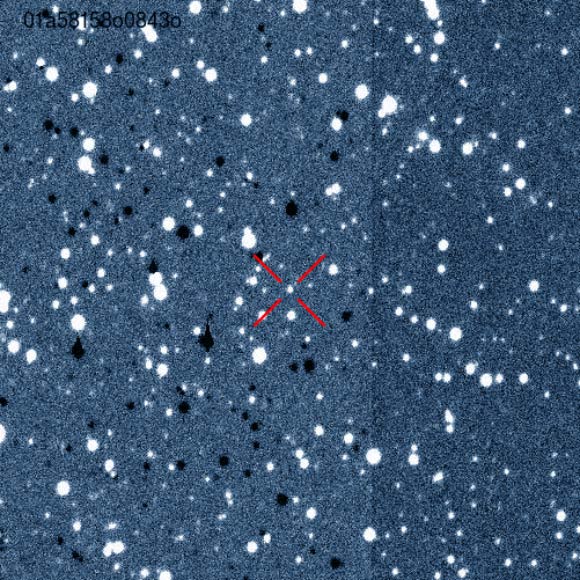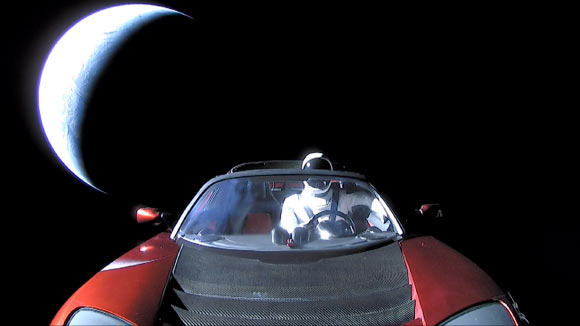Astronomers using the Asteroid Terrestrial-impact Last Alert System (ATLAS) telescope on Mauna Loa in Hawaii have captured images of the Tesla Roadster launched into space as part of SpaceX’s Falcon Heavy test.
ATLAS is an asteroid impact early warning system being funded by NASA and developed by the University of Hawaii Institute for Astronomy.
It consists of two telescopes, 100 miles (161 km) apart, which automatically scan the whole sky several times every night looking for moving objects.
ATLAS was not looking for Elon Musk’s Tesla Roadster — it was found during routine observations and automatically identified as a near-Earth object.
“Our mission is designed to look for things coming toward Earth, but this time investigators found something going away from Earth,” said University of Hawaii astronomer Dr. Larry Denneau, principal investigator for the ATLAS project.
“As a fan of what SpaceX is doing, it is fun to be a part of advances in science.”
The Tesla Roadster was seen as a moving object in four separate observations.
After it was detected by the automatic software system, its positions were submitted to the International Astronomical Union Minor Planet Center, which is responsible for determining the orbits of asteroids and other small solar system objects.
The object was immediately identified as the recently launched Tesla Roadster.
ATLAS’ orbit determination software pinned down the orbit from the four observations, measuring it about 500,000 miles (805,000 km) from Earth, speeding away at about 8,000 mph (3.6 km/sec).
“We were lucky to catch the Roadster before sunrise during our regular observing,” Dr. Denneau said.
“This really demonstrates the power of our system to find small objects that could hit Earth, and accurately measure their orbits to see if they’re dangerous.”









